Broan BXT130WW Handleiding
Bekijk gratis de handleiding van Broan BXT130WW (21 pagina’s), behorend tot de categorie Afzuigkap. Deze gids werd als nuttig beoordeeld door 42 mensen en kreeg gemiddeld 4.8 sterren uit 21.5 reviews. Heb je een vraag over Broan BXT130WW of wil je andere gebruikers van dit product iets vragen? Stel een vraag
Pagina 1/21

BXT1 SERIES
4-WAY CONVERTIBLE
RANGE HOOD
READ AND SAVE THESE INSTRUCTIONS
WARNING
INTENDED FOR DOMESTIC COOKING ONLY. !
!
WARNING
TO REDUCE THE RISK OF INJURY TO PERSONS IN THE EVENT
OF A RANGE TOP GREASE FIRE, OBSERVE THE FOLLOWING*:
1. SMOTHER FLAMES with a close-fitting lid, cookie sheet or metal tray,
then turn off the burner. BE CAREFUL TO PREVENT BURNS. IF THE
FLAMES DO NOT GO OUT IMMEDIATELY, EVACUATE AND CALL
THE FIRE DEPARTMENT.
2. NEVER PICK UP A FLAMING PAN — You may be burned.
3. DO NOT USE WATER, including wet dishcloths or towels — This could
cause a violent steam explosion.
4. Use an extinguisher ONLY if:
You own a Class ABC extinguisher and you know how to operate it.A.
The fire is small and contained in the area where it started.B.
The fire department has been called.C.
You can fight the fire with your back to an exit.D.
* Based on “Kitchen Fire Safety Tips” published by NFPA.
1. For indoor use only.
2. For general ventilating use only. Do not use to exhaust hazardous or
explosive materials and vapors.
3. To avoid motor bearing damage and noisy and/or unbalanced impellers,
keep drywall spray, construction dust, etc. off power unit.
4. Your hood motor has a thermal overload which will automatically shut
off the motor if it becomes overheated. The motor will restart when it
cools down. If the motor continues to shut off and restart, have the hood
serviced.
5. For best capture of cooking impurities, the bottom of the hood should
be at a minimum of 20” and at a maximum of 25” above the cooking
surface.
6. To reduce the risk of fire and to properly exhaust air, be sure to duct
air outside — Donot exhaust air into spaces within walls or ceiling or into
attics, crawl space or garage.
7. When installing, servicing or cleaning the unit, it is recommended to wear
safety glasses and gloves.
8. Please read specification label on product for further information and
requirements.
CAUTION !
TO REDUCE THE RISK OF FIRE, ELECTRIC SHOCK OR INJURY
TO PERSONS, OBSERVE THE FOLLOWING:
1. Use this unit only in the manner intended by the manufacturer. If you
have questions, contact the manufacturer at the address or telephone
number listed in the warranty.
2. Before servicing or cleaning unit, switch power off at service panel
and lock service disconnecting means to prevent power from being
switched on accidentally. When the service disconnecting means
cannot be locked, securely fasten a prominent warning device, such as
a tag, to the service panel.
3. Installation work and electrical wiring must be done by qualified
personnel in accordance with all applicable codes and standards,
including fire-rated construction codes and standards.
4. Sufficient air is needed for proper combustion and exhausting of
gases through the flue (chimney) of fuel burning equipment to prevent
backdrafting. Follow the heating equipment manufacturer’s guidelines
and safety standards such as those published by the National Fire
Protection Association (NFPA) and the American Society for Heating,
Refrigeration and Air Conditioning Engineers (ASHRAE) and the local
code authorities.
5. When cutting or drilling into wall or ceiling, do not damage electrical
wiring and other hidden utilities.
6. Ducted fans must always be vented to the outdoors.
7. Do not use this unit with any additional solid-state speed control device.
8. To reduce the risk of fire, use only metal ductwork.
9. This unit must be grounded.
10. When applicable local regulations comprise more restrictive installation
and/or certification requirements, the aforementioned requirements
prevail on those of this document and the installer agrees to conform to
these at his own expense.
TO REDUCE THE RISK OF A RANGE TOP GREASE FIRE:
a) Never leave surface units unattended at high settings. Boilovers cause
smoking and greasy spillovers that may ignite. Heat oils slowly on low
or medium settings.
b) Always turn range hood ON when cooking at high heat or when
flambeing food (i.e.: Crêpes Suzette, Cherries Jubilee, Peppercorn
Beef Flambé).
c) Clean ventilating fans frequently. Grease should not be allowed to
accumulate on fan, filters or in exhaust ducts.
d) Use proper pan size. Always use cookware appropriate for the size of
the surface element.
INSTALLER: Leave this manual to the homeowner.
HOMEOWNER: Use and care information on page 5.
99529024A
I CN ANADA REGISTER,
YOUR :PRODUCT ON LINE AT
WWW BROAN. .CA
I U.S.A., N REGISTER
YOUR :PRODUCT ON LINE AT
WWW BROAN COM. .

IMPORTANT
For Non-ducted (Duct free) Installation:
a) Purchase non-ducted filter separately, part number HPFX1.
b) Remove and discard damper/duct connector and trap door (See Step 3
in “Preparing the range Hood,” on page 3).
c) Follow all steps except steps inside dotted lines.
For Ducted Installation:
Follow all steps, including steps inside dotted lines except Step 3 in
“Preparing the range Hood,” on page 3.
Begin planning ductwork by deciding where the duct will run between
the range hood and the outside. For best performance, use the shortest
possible duct run and a minimum number of elbows. There are several
choices shown - FIGS. 1A - 1F.
If needed, a 3¼” x 10” rectangular ducting range hood can be converted to
a round duct by means of a transition.
FIG. 1A. Ducting directly through the wall (for range hoods mounted on an
exterior wall). Shown are two ways to duct through an outside wall. If a wall
cap is used directly off the back of the hood, special care must be taken to
make sure that the damper in the damper/duct connector on the hood and
damper in the wall cap do not interfere with each other when the hood is
operating. This could result in either inadequate air delivery or back drafts.
If this condition does exist, remove the hood damper flap. Sometimes when
using a wall cap it is easier to duct vertically and then use an elbow as
shown in FIG. 1B.
FIG. 1C. Ducting straight up through the roof using 3¼” x 10” rectangular
duct. (For single story installations.)
FIG. 1D. Ducting between the ceiling joists (for multi-story installations) or
through the soffit space above the cabinets (where the soffit connects to
an outside wall).
FIG. 1E. Straight up through the roof using 3¼” x 10” to 6” round duct
transition and 6” round duct (for single-story installations).
FIG. 1F. Straight up through the roof using 7” round duct (for single-story
installations).
PLANNING DUCTWORK INSTALLATION
TOOLS
Drill
Sabre saw
Pliers
Flat blade and
Phillips screwdriver
Tape measure or ruler
and pencil
TOOLS AND MATERIAL REQUIRED
For ducted installation ONLY:
Saber saw
Metal snips
MATERIALS
Electrical wiring and supplies of type to comply with local codes
Roof or wall cap
Roof cement or caulk
Duct and metal foil duct tape
For installation on kitchen cabinets with recess bottoms only:
Two 1" x 2" x 12" (approximate length) wood strips (purchase locally)
Four 1¼" long flat heat wood screws (purchase locally) to fasten
strips to cabinet bottom
HJ0191
FIG. 1A
WALL OR CAP 639 649
FIG. 1B
WALL OR CAP 639 649
3¼” 401X 10” DUCT
FIG. 1C ROOF OR CAP 634 644
3¼” X DUCT 10” 401
FIG. 1D ADJUSTABLE ELBOW 419
WALL CAP 641
3¼” 6” X 10” TO ROUND
DUCT 411TRANSITION
6” 406ROUND DUCT
FIG. 1E
ROOF OR CAP 634 644
6” 406ROUND DUCT
3¼” 6” X 10” TO ROUND
DUCT 411TRANSITION
FIG. 1F ROOF OR CAP 634 644
7” 407ROUND DUCT OPTIONAL DAMPER
MODEL BP87Q
- 2 -

1. Unpack hood and check contents. You should have:
1 - Aluminum filter
1 - 3¼” x 10” Damper/duct connector
(mounted inside of hood for shipping only) (save the screws)
LED bulb with GU10 base.1 -
2. Remove wiring box cover. Under cover find the parts bag containing
loose hardware.
For non-ducted installation only
3. For non-ducted installation, remove the trap door retaining screw from
inside the hood, then pull the grille trap door out of the hood and discard.
(FIG. 3)
NOTE
The grille on front of hood must be open and visible for hood
to operate in non-ducted mode.
4. Remove either top or rear electrical knockout depending upon whether
wiring will enter hood from wall or cabinet. ( )FIG. 4
PREPARING THE RANGE HOOD
DUCTED INSTALLATION ONLY
NOTE
The trap door must NOT be removed to function in ducted mode.
5. Remove appropriate duct knockout on hood by inserting screwdriver
into edge of knockout and breaking tabs holding knockout to hood.
Peel knockout back with pliers. (FIG. 5)
6. For 3¼” x 10” ducting only: Fit damper/duct connector over opening
and secure in place using screws previously removed in PREPARING
THE HOOD section (FIG. 6)
Hinge pins and damper/duct connector should be toward top of hood
for ducting through wall or toward back of hood for ducting through
cabinet above hood. Seal joint between damper/duct connector and
hood with duct tape.
7. 7” round ducted discharge only: Install, between 2 duct sections, a
7” round damper (purchase separately). Damper flap must open
freely in direction of air flow (away from range hood).
PREPARING THE INSTALLATION LOCATION
NOTE
MOUNT HOOD SO THAT BOTTOM OF HOOD IS 20”-25” ABOVE
COOKING SURFACE.
OMIT STEP 8 if range hood will be installed under cabinets with flush
bottom.
8. (For installation on recessed bottom cabinets only.) Attach a wood filler
strip at each side of recessed area under cabinet. (Use two 1” x 2” strips
cut to length.) If recess is more than 1” use thicker strips. Attach strips
with 1¼” screws about 3” from each end. See .FIG. 7
9. Measure and mark the following ( ):FIGS. 7 & 8
a) Electrical line opening
b) Duct opening
10. Drill four pilot holes in corners of marked duct opening as shown and cut
opening with saber saw or keyhole saw.
11. Use 1¼” drill bit to drill opening for electrical connection in wall or
cabinet.
12. Hold hood up against cabinet bottom and trace keyhole slots onto
cabinet bottom or filler strips.
13. Screw the four supplied 7/8” wood screws for mounting the hood into the
exact center of the narrow end of the keyhole slots marked underneath
the cabinet. Allow 3/8” of the screws to project, so the hood can be fitted
into place.
CUT STRIPS TO FIT
CENTER LINE
WIDTH OF
RANGE HOOD
ELECTRICAL WIRING OPENING
DUCT OPENINGS
CABINET FRONT
VERTICAL DUCTING AND WIRING
(Through cabinet bottom) CABINET BOTTOM
BACK WALL
HORIZONTAL DUCTING
AND WIRING (Through wall)
3¼” x 10” DUCT
7” ROUND DUCT
3"
3"
8 DIA.”
ACCESS HOLE
WOOD SHIMS
(recessed-bottom
cabinets only)
ELECTRICAL
ACCESS HOLE
(in cabinet bottom)
CABINET BOTTOM
5”
CABINET FRONT
HM0014A
7½”
5¼ 5¼” ”
1/8”
3/8 3/4” ”
1½”
9”
5¼ 5¼” ”
6¾”
1/2”
1/8”
4½”
1½”
9”
3¾”
Ø 1½”
1½”
3”
6¾”
1/2”
1½”
3”
FIG. 2
FIG. 3
FIG. 4
FIG. 5
FIG. 6
FIG. 7
FIG. 8
- 3 -
KEYHOLE SLOTS (4)
ALUMINUM FILTER
DAMPER DUCT CONNECTOR/ WIRING BOX COVER
Product specificaties
| Merk: | Broan |
| Categorie: | Afzuigkap |
| Model: | BXT130WW |
Heb je hulp nodig?
Als je hulp nodig hebt met Broan BXT130WW stel dan hieronder een vraag en andere gebruikers zullen je antwoorden
Handleiding Afzuigkap Broan
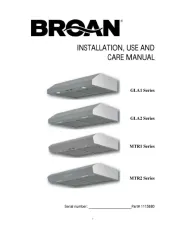
3 Juni 2025
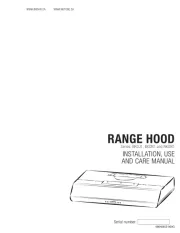
17 April 2025

17 April 2025
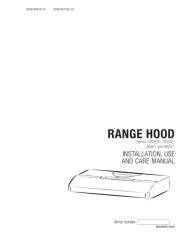
17 April 2025

17 April 2025
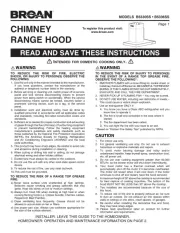
17 April 2025
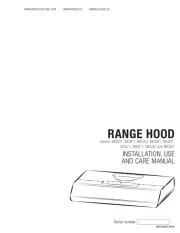
17 April 2025
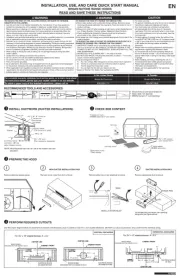
16 April 2025
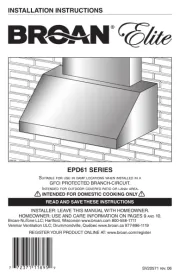
16 April 2025
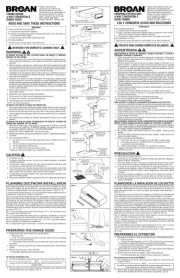
15 April 2025
Handleiding Afzuigkap
- Dimplex
- Wave
- Wells
- Scandomestic
- Premium Levella
- Eico
- Elektra Bregenz
- Steel Cucine
- Jocel
- Zanussi
- Stoves
- Euro Appliances
- Thermex
- Midea
- Pitsos
Nieuwste handleidingen voor Afzuigkap
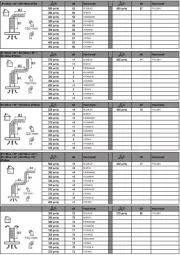
29 Juli 2025
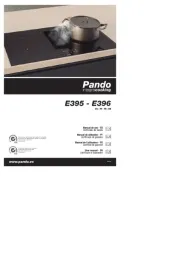
29 Juli 2025
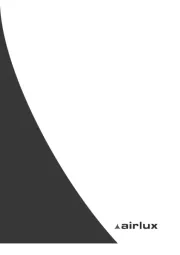
29 Juli 2025
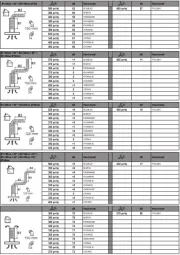
29 Juli 2025
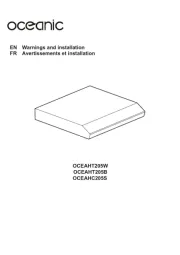
29 Juli 2025
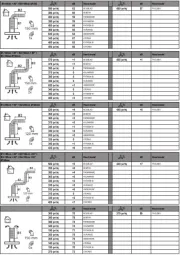
29 Juli 2025
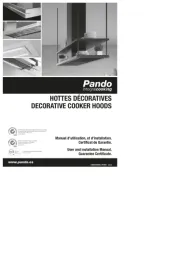
29 Juli 2025
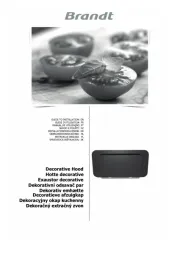
29 Juli 2025
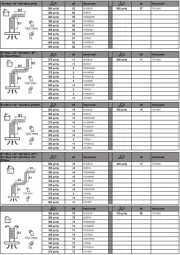
29 Juli 2025
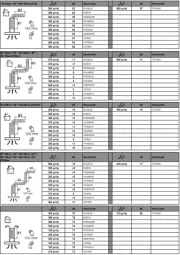
28 Juli 2025